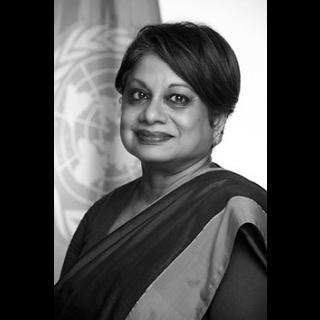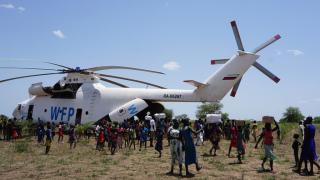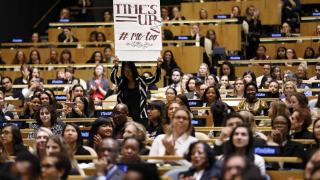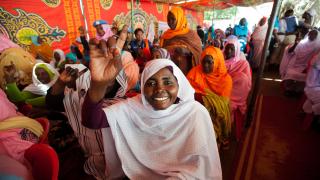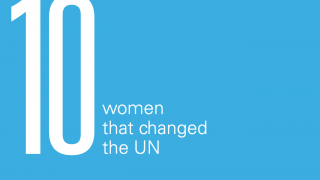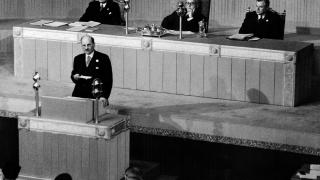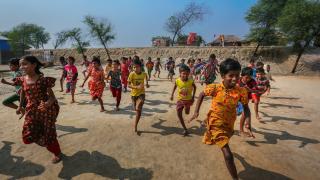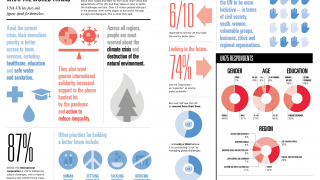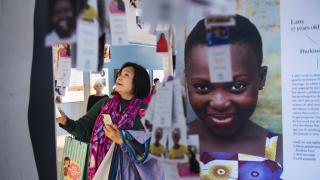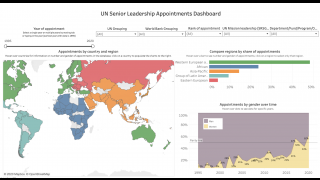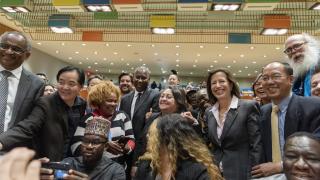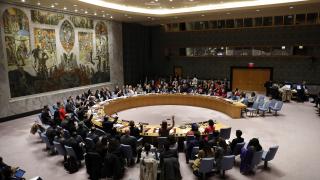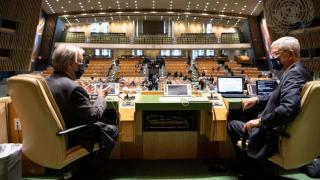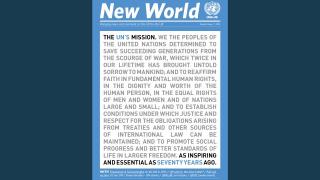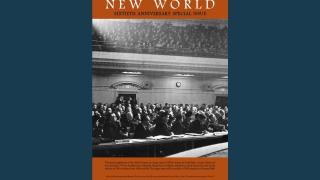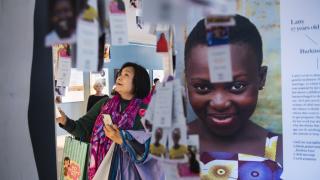
As we commemorate 75 years of the United Nations, it is important to recognise its significant contribution to promoting the rights of women all over the world. The substance and process the United Nations has established regarding women’s rights has transformed the nature and practice of international law, enhanced by its active support for the creation of international norms, inclusive process of decision making, and system-wide commitment to these issues.
Let us begin with process. The Women’s Convention (CEDAW) of 1981 set the precedent for future conventions in reaching out beyond diplomats and their lawyers to engage in wide ranging consultations with women’s groups from around the world. Academics, social activists and policymakers were all part of this process and the source for many of the ideas - a model that would be replicated whenever the international community responded to social issues. The current climate change movement is one such example.
Another innovation of these early treaties was to establish a model of a review by a technical group of experts upon submission of reports by the government concerned, along with Optional Protocols where individuals who have exhausted the domestic process could seek redress. This intrusive structure was welcomed at that time as a major step forward for women’s rights. Critically, this framework recognised that to be truly effective the attitude and behavior of individuals must change. As a result, the Convention included clauses that committed States to take proactive measures to modify behavior and custom and fight against stereotypes.
The Women’s Convention also mainstreamed the idea of substantive equality. Moving beyond mere “sameness”, the equality provisions of the Convention focus on “effect”: what is the actual result when it comes to measuring equality? Substantive equality was also pursued in the document by combining civil and political rights with economic, social and cultural rights. Large parts of the Convention deal with education, health and labour while securing the civic and equality rights of women. This too was seen as a major development at that time.
While equality was the main focus of the Women’s Convention, the issue of violence against women remained a taboo subject well into the 1990s. It was the 1995 Beijing Conference that brought activism regarding Violence Against Women to the fore. Once again, agitation came from the mobilization of women’s and civil society groups; in South East Asia and Eastern Europe against trafficking, in Latin America against honour killings and domestic violence, in South Africa and the United States against rape, as well as humanitarian groups from all over the world dealing with violence against women during times of conflict.
The events in Rwanda and the conflict in Bosnia Herzegovina foregrounded this issue, and women’s groups went on to become amongst some of the main drivers for the creation of an International Criminal Court. Violence against women continues to be a centerpiece of the international agenda, driving innovations such as the establishment of a Special Rapporteur on Violence Against Women at the Human Rights Council, the Declaration on Violence Against Women passed by the General Assembly and the series of Security Council Resolutions on Women Peace and Security.
Looking forward, the women’s rights agenda at the United Nations faces major challenges.
A new generation of feminists have raised the question of who is this “woman” covered by the Women’s Convention - how do other gender identities fit in and what will be the attitude toward trans identities? While sates are extremely conservative in this regard civil society is more progressive.
Obstacles to women’s participation and the perennial glass ceiling still remain a major concern, though there have been important developments in recent decades. Recently prominent voices, including at the UN and national capitals, have made a concerted push around the fact that women’s representation must be a continued focus in the movement for gender equality.
Increasingly there is heightened resistance, even among feminists of the global south, to the perceived “arrogant gaze” towards the cultural practices of diverse ethnic and religious groups in southern countries contained in the clear-cut language of CEDAW and the Declaration. Innovative thinking and vision in this area is needed. There might be general agreement that women’s rights must be foregrounded, but “the how and the when” may have to be discussed with greater sensitivity.
Finally, the Covid-19 pandemic has exposed the extent to which the last few decades have seen the erasure of the issue of economic and social rights for women. There is now an urgent need to look at these issues afresh. The public service issues of education and health, along with an assessment of women’s labour, will be key to our immediate future. Far reaching technological change has created more opportunities for women of every strata, making it even more important that we rekindle the conversations around these issues.
More broadly the women’s rights agenda must constructively and actively engage with its intersections in order to evolve and develop meaningfully.
As an example, in the early days of the women’s rights agenda at the United Nations, the environment and environmental issues were not a major consideration. Recently however, women and girls have emerged as some of the leading figures highlighting the threat climate change poses to the world, (look at the activism of Vanadana Shiva and Greta Thunberg for example). Environmental awareness must be an integral part of how we set the agenda and move women’s rights forward.
From its inception, the United Nations has played an extraordinary and pioneering role with regard to the rights of women. Indisputably, major international and domestic advances of the women’s rights agenda have been due to the multilateralism of the United Nations, and in particular its constructive engagement with civil society. We should all hope this partnership continues and that future developments will also emerge to ensure that women’s rights are protected and their participation secured.
Photo: Scenes from the 63rd session of Commission on the Status of Women, held at the United Nations headquarters on Monday, 11 March 2019, in New York. c. UN Women/Amanda Voisard

